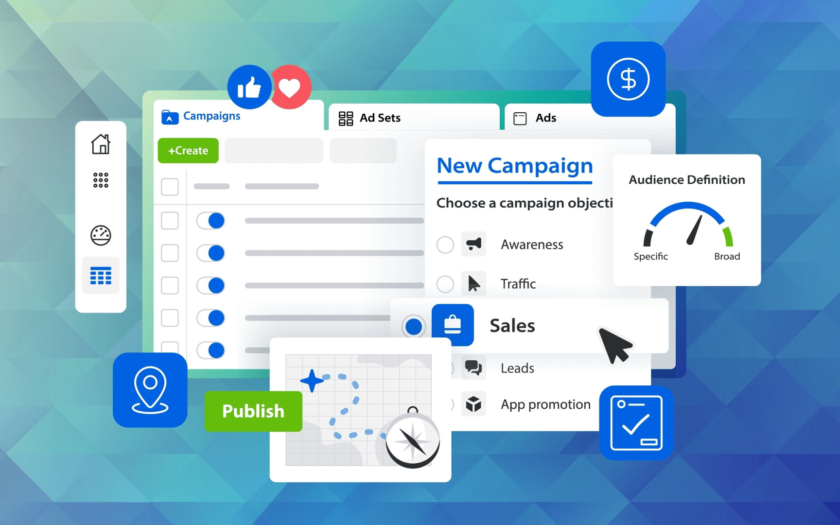[ad_1]
Third-party tools have always been valuable in B2B PPC, but in 2025, they’re essential.
With third-party cookies fading, cross-channel attribution still a mess, and competitors constantly pivoting, advertisers who rely only on platform-native tools are leaving massive optimization opportunities on the table.
To stay ahead, you need the right external tools. This article breaks down five I recommend testing or doubling down on ASAP to level up your PPC strategy, including:
My favorite CDP.
My ace in the hole for non-browser tracking.
My preferred competitive research tool.
My choice for a multi-channel attribution tool.
Google Ads Editor (including some new functionality).
Segment is a leading customer data platform (CDP) that helps marketers consolidate data sources and break down silos – an ability that’s more critical than ever in today’s evolving measurement landscape.
We integrate Segment with GTM for our clients to reduce reliance on third-party cookies – tracking mechanisms controlled by browsers that are increasingly unstable.
Segment centralizes data within servers, giving you greater control and ownership of your analytics.
Other CDPs, such as Tealium and Salesforce Data Cloud, offer similar functionality, but Segment is our choice because it offers a wide range (400+) of integrations.
We’ve also found that it’s relatively easy for technical teams to implement, scales well, and has very handy features that help with data validation.
Keep in mind, though, that Segment is a significant investment. CDPs, in general, are not cheap.
It won’t solve all of your data issues. Its value relies on having:
A well-developed data infrastructure.
Multiple destinations (e.g., a mobile attribution tool, a user analytics tool, and assorted martech sources) for event data to consolidate.
If you’re fairly new to the concept of CDPs, make sure (and this is true of any martech investment) you can identify the exact challenges you need help with.
Do your due diligence in the consideration stage to ensure your CDP of choice has a plan to help you overcome them.
Dig deeper: Top 6 B2B paid media platforms: Where and how to advertise effectively
Server-side tracking is crucial to a successful performance marketing program, especially in 2025. I recommend Stape, which bills itself as “an all-in-one server-side tracking solution.”
Stape carries a slightly lower price tag than its competitors (including taggers.io) and lets customers choose from client- or server-side tracking.
While both methods give clients control over their data, client-side tracking depends on cookies and is vulnerable to ad blockers and user settings.
It could take a significant hit once Google rolls out the Chrome opt-out prompt.
This is a bit of a cheat since it’s more of a category than a tool. On the third-party side, old standout Semrush is our tool of choice for both PPC and SEO campaigns.
We also rely on:
LinkedIn and Meta ad libraries: Great resources for seeing your competitors’ creative.
Google’s Ad Transparency Center: Launched in spring 2023, it provides a ton of information on competitors’ ads on Search, YouTube, and Display – even breaking things down by geo, format, and timing for the ads’ run.
Combine these tools with Semrush’s insights – estimated competitor budgets, target keywords, landing pages, search volume, and CPCs – and you’ll have everything you need to map out your competitive advertising landscape.
Dig deeper: How to benchmark PPC competitors: The definitive guide
Get the newsletter search marketers rely on.
Multi-channel marketing attribution tools abound these days, whether they’re third-party martech tools or available in-platform (e.g., Meta’s Robyn).
Northbeam is known more for its work helping B2C/ecommerce brands understand attribution than it is for B2B brands, but we like it at my agency for a few reasons:
Its analysis covers the entire marketing mix, which helps brands understand cross-platform performance and interplay.
It features custom attribution models, which is critical because attribution models are neither set-and-forget nor broadly applicable across brands. Some testing and tweaking is required, and attribution models should always align with business goals.
Like other third-party attribution tools, Northbeam doesn’t rely on in-platform data, which means it doesn’t have any inherent biases that may affect holistic analysis.
Google Ads Editor has been around for years. I suspect someone on your team is already well-versed in it.
But there are a few functionalities that really make this a must-use tool, so make sure you or the practitioners on your team are using these to the fullest:
Bulk edits: Easily make large-scale changes across multiple campaigns and ads.
Offline access: Work offline and upload changes later – so you can stay productive even without wifi.
Enhanced custom rules: Over the last few versions of Ads Editor, Google has introduced some updates to custom rules that can help alert advertisers to less-than-ideal settings in their campaigns (and they can also be ignored or turned off if advertisers prefer). Make sure you’re keeping up on the range of rules and understand the benefits of applying each. They could save you some unforced campaign errors.
This is by no means a comprehensive list.
I haven’t even touched on GPT or LLMs or the functionality available through HubSpot, which we use to help our clients build nurturing strategies integrated with CRM data as leads and customers come into the system.
But the list does represent some relatively under-used options that we’ve seen make a big impact in our clients’ campaigns over the last year-plus.
One thing’s for sure: as new challenges arise, there’ll be a proliferation of martech options to help you tackle them.
As you build momentum in 2025, incorporate these recommendations where they fit – but don’t spread yourself too thin unless you have a clear use case for each tool.
Dig deeper: 11 free tools for PPC campaign management
Contributing authors are invited to create content for Search Engine Land and are chosen for their expertise and contribution to the search community. Our contributors work under the oversight of the editorial staff and contributions are checked for quality and relevance to our readers. The opinions they express are their own.
[ad_2]
